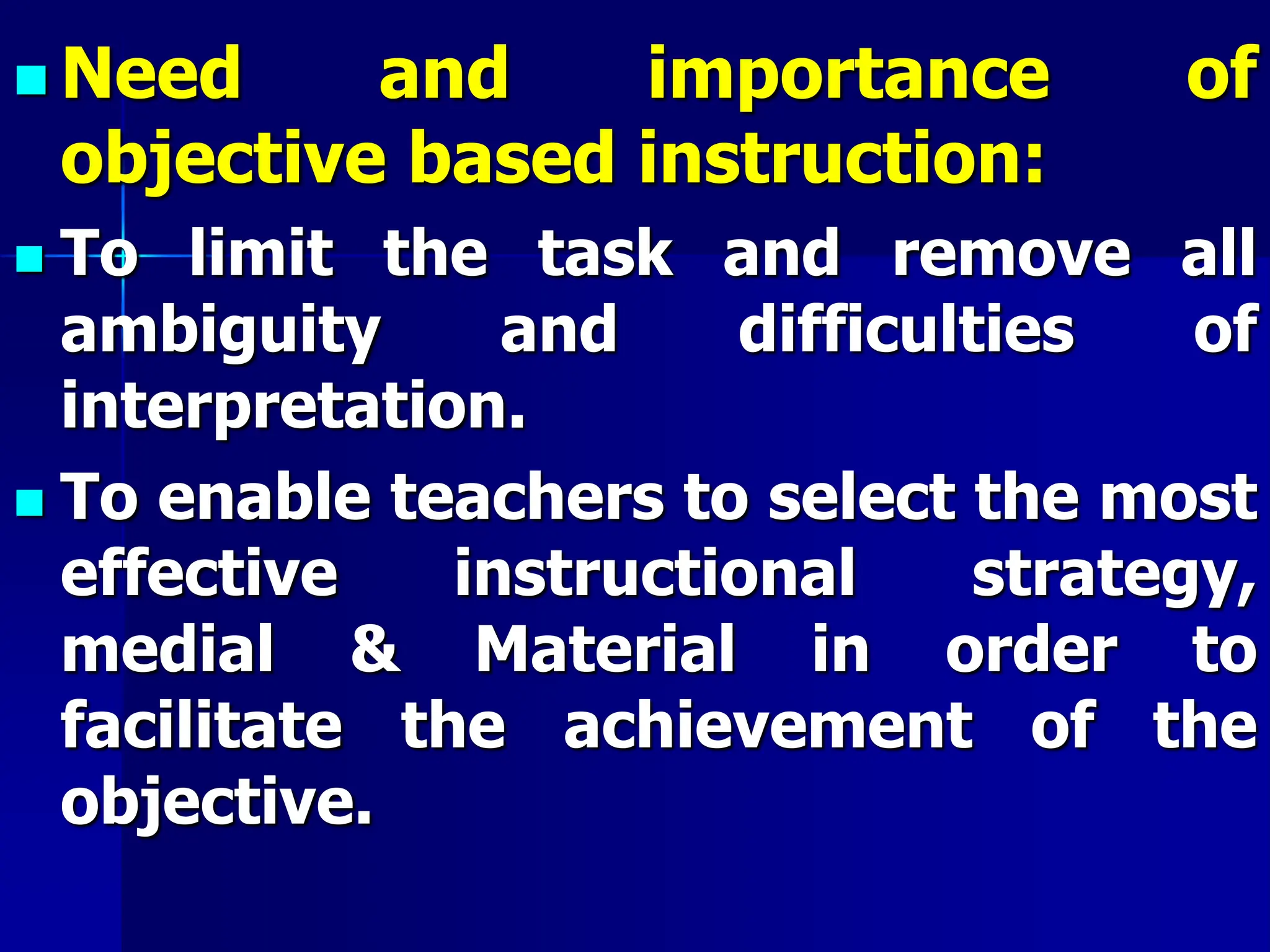The document discusses Benjamin Bloom's Taxonomy of Educational Objectives, which classifies learning objectives into three domains (cognitive, affective, psychomotor) and defines categories within each domain ranging from basic to more complex levels of learning. The cognitive domain includes knowledge, comprehension, application, analysis, synthesis, and evaluation. The affective domain includes receiving, responding, valuing, organizing, and characterizing. The psychomotor domain includes perception, set, guided response, mechanism, complex overt response, and adaptation. Bloom's Taxonomy provides a framework for designing instructional objectives and assessments across different types and depths of learning.

















































































